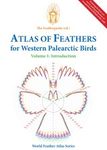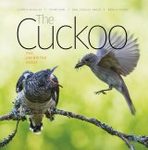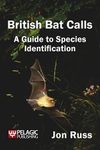Field / Identification Guide
By: Ed Drewitt(Author)
250 pages, 500+ colour photos
The first comprehensive guide to bird pellets including owls, hawks, falcons, corvids, waders, and garden birds.
![Bird Pellets Bird Pellets]()
Click to have a closer look
About this book
Contents
Customer reviews
Biography
Related titles
Recommended titles
About this book
This book is the first comprehensive guide to bird pellets, the undigested remains of food that form together into a ball or sausage-like shape and are regurgitated. It showcases the range of pellets that different bird species produce, including owls, hawks, falcons, corvids such as ravens and magpies, as well as waders – and even garden birds! The common items found in them, such as small mammal skulls and bones, are analysed in detail, with the discussion accompanied by numerous colour illustrations.
The book progresses methodically from an introduction to pellets, covering what they are and how they are formed, to instructions on dissection and analysis and how this can be used in research, followed by a closer look at the pellets of each bird species in turn – from the golden eagle to the dipper. We learn how to identify the remains of small mammals including bats, as well as reptiles, amphibians, fish, invertebrates and of course other birds.
Dissecting bird pellets and identifying what is inside can be an important tool for discovering what birds are feeding on as part of more detailed diet studies. It is also an activity often delivered at family-friendly events or in schools by wildlife organisations. Extracting information from pellets also has sound scientific value: while it does not capture everything a bird has been eating, it still goes a long way in revealing the diet of birds and how this may change over time, in different habitats and different parts of the world.
Contents
1. Introduction
2. What is a pellet?
3. Dissecting your own pellets – where to begin
4. Owl pellets
5. Falcon, hawk, kite, harrier and eagle pellets
6. Corvid (crow family) pellets
7. Gull, tern and skua pellets
8. Other seabird and waterbird pellets
9. Garden bird pellets
10. Other species’ pellets
11. Identifying small mammal bones
12. Identifying other small animal parts
13. What else might you find in a pellet?
14. A final reflection
References
Latin names of species
Index
Customer Reviews (2)
-
The best book on pellets
By
Keith
22 Jun 2024
Written for Paperback
Ed Drewitt has created a great guide here, and to date, apart from a few leaflets and magazine articles, there has not been enough available information on bird pellets to allow you to see what a bird has eaten. As a kid I always thought that only owls coughed up pellets, but just about all birds create them, depending on what they have been eating. The items found in a pellet are examined in this book, ranging from small mammal bones to insect cases. Ed Drewitt explains what pellets are and how they are formed. A key area of guidance is on how to dissect each pellet and how to identify what you find. Not many adults (other than professionals) examine pellets but many school children do and this book is laid out in an easy style that allows anyone to work out what they are looking at.
In order, the book first looks at what a pellet is, and then moves on to tell you how to dissect it. Naturally, the initial focus is on owl pellets, but then widens to those created by a range of birds of prey, followed by crows and gulls, and some common garden birds. Then there is a helpful guide to the bones of small mammals and other animal parts – such as teeth. There is also a look at hard insect parts that occur in pellets. There are many helpful photos to allow quick identification of what you are looking at.
4 of 7 found this helpful
-
Was this helpful to you? Yes No
-
So sorry to say that this is a huge missed opportunity.
By
Ric
25 Jun 2024
Written for Paperback
I bought, read and enjoyed Ed's previous excellent book on raptor prey remains, so I was hugely excited to see that this book was about to be published. I'm sorry to say that overall I am disappointed. The detail on how to ID pellets to the birds of origin is really helpful, and in my opinion, and with the later caveats, it's the most useful part of the book, although I question why we need so many photographs of birds actually in the act of regurgitating pellets (little owl ×2, peregrines ×2, merganser, egret, kingfisher x4, redshank, greenshank, dipper, robin, blackbird etc., etc..., and these are all printed quite large, at the extent of other content... read on for more on that) yet it's the pellets themselves, not the birds, which are supposed to be the subject of the book. There are some really useful photos of pellets and faeces in the field, to contrast with the life-sized 'studio pics' of pellets, but no scales on the on-site pics so we have little idea of their sizes. This isn't the author's fault as it's clear from the photo credits that they are sourced elsewhere. I'm somewhat irritated by the over-frequent use of the rather childish term 'poo' to refer to faeces (ejected not excreted, by the way). Let's be adult here, this isn't supposed to be a children's book. The majority of the photos of skulls, bones and pellet contents are reproduced life-sized, which means they appear extremely small on the page, and thus the images lack detail. Not everything has a scale visible in the image, despite that accurate measurement can be key to successful ID. Presumably, this is due to that flawed decision to depict the ultra-tiny bones life-size. In my opinion, if you need a hand lens to see detail on the specimen (which in many cases you do) then a life-size image in a book is pretty pointless. Even the 20× magnified image of a shrew incisor isn't really big enough, (when there's sufficient white space on the page why not 50× or bigger, so we can see everything?) Bats are really under-represented here (only four pages, featuring just four out of 18 species on the British list) and the life-size bat skull photos are absolutely useless with barely any visible detail, especially when bat remains are the single most challenging taxon to identify from pellet remains. Overall shape is seldom helpful so you need really detailed macro views of the dentition. Many of the specimens photographed haven't been especially thoroughly cleaned so they still have pellet fluff on them, and some aren't ever-so well lit either, both factors further impacting on detail visibility. In some ways it is helpful to see real-life bones and fragments 'straight from the pellet' but not at the expense of properly detailed macro photographs. I am a pretty experienced pellet dissector (50 years) and even I wouldn't be overconfident on identification if I had to rely on this book alone. Also, within just ten minutes of flicking through, I found two caption errors of incorrectly labelled bones photographs; I think that's a fox scapula? (dunno – no scale!) incorrectly labelled as a rabbit 'scapular' [sic] and humeri captioned as femurs. There is also an error in the text describing how many molars that dormice and squirrels have (seems there was misuse of the term 'molars' when 'cheek teeth' should have been used, i.e. premolars plus molars – something that could have been easily corrected by googling the dental formulae of the species). Oh dear! All in all, I cannot therefore wholeheartedly recommend it, and that is a huge disappointment because I was so excited about the book's publication. Despite all this miserable-gittery, I know I will learn much that is positive from the book but I do think it's a hugely lost opportunity to publish a really comprehensive and authoritative book 'for the ages'. I've added an extra star to the review because Ed has been motivated and determined enough to write the book in the first place.
4 of 5 found this helpful
-
Was this helpful to you? Yes No
Biography
Ed Drewitt is a professional naturalist, wildlife detective, and broadcaster for the BBC. He has been studying urban Peregrines for over 15 years, and specialises in colour ringing their chicks, and identifying what they have been eating.
Field / Identification Guide
By: Ed Drewitt(Author)
250 pages, 500+ colour photos
The first comprehensive guide to bird pellets including owls, hawks, falcons, corvids, waders, and garden birds.
"[this book] aims to fill this gap and goes about doing so in a thorough and digestible manner [...] Both sections are filled with high-quality images, allowing for detailed inspection of the minutiae needed to identify a vole skull to species level, and are accompanied by detailed text, especially so for many of the mammals skulls"
– Rob Jaques, BTO News 352, autumn 2024
"Yet another masterpiece by Ed Drewitt. This is the book I wish I'd had as a 10-year-old with a bath full of barn owl pellets!"
– Iolo Williams, TV presenter, author and naturalist
"Ed Drewitt's lavishly illustrated book will be invaluable both for identifying pellets produced by different bird species, and for identifying the prey items in the pellets. The "clincher" tips are especially useful for identifying small mammal skulls quickly."
– Gareth Jones, Professor of Biological Sciences, Bristol University
"Ed Drewitt has produced a must-have guide for birders and naturalists who have always wanted to investigate these curious objects."
– Stephen Moss, author and naturalist
"This beautifully-produced book by Ed Drewitt represents a wealth of expertise built up by Ed over decades of studying birds and bird diet. As a field guide it will be invaluable to naturalists and field workers, and a very useful addition to any ornithologist's bookshelf."
– Dr Rob Thomas, Cardiff University
















































